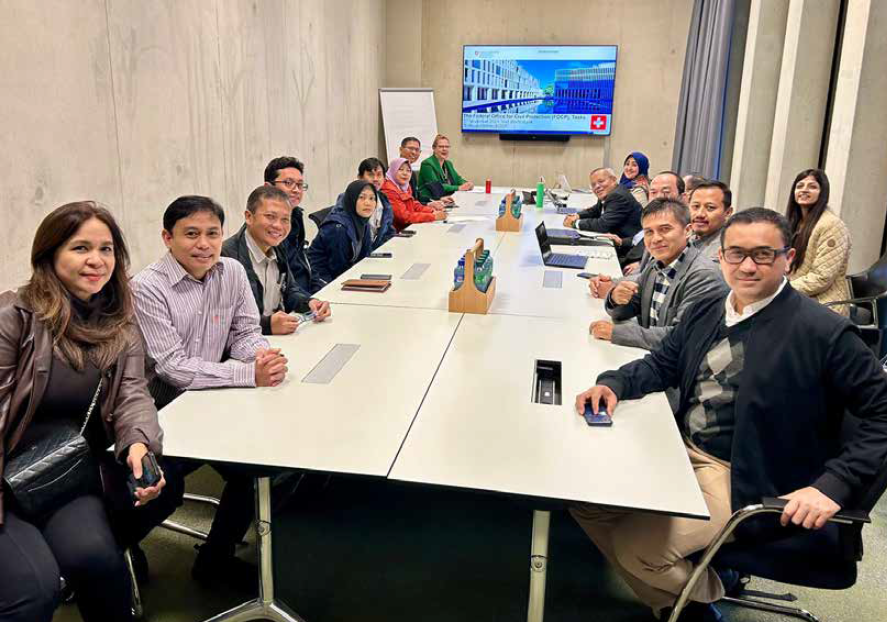Collaborating to Bridge Protection Gaps and Mobilize Private Risk Capital: The Global Shield Financing Facility’s Partnership with the Insurance Development Forum

Photo: © Curt Carnemark / World Bank
The World Bank Group and the Insurance Development Forum (IDF) have partnered to address heightened risks from climate shocks and disasters. At the core of this collaboration is the Global Shield Financing Facility (GSFF), a multi-donor trust-funded program hosted by the World Bank Group.
Background on the Global Shield Financing Facility
The GSFF, an evolution of the Global Risk Financing Facility, was inaugurated at COP27 in 2022. Functioning as one of the three financing vehicles under the G7/V20-led Global Shield against Climate Risks, GSFF aims to systematically close the protection gap through coordinated efforts. GSFF's primary objective is to expand support for economically challenged and vulnerable nations by facilitating increased access to prearranged finance for responding to natural disasters and climate shocks. The program strategically provides advisory and financial support for both the design and implementation of public and private financial solutions. External partnerships are forged for technical collaborations geared towards reducing the financial protection gap.
Read the Global Shield Financing Facility Annual Report here.
Private Risk Capital Mobilization:
An integral objective of GSFF is the mobilization of private risk capital to enhance financial resilience. This is achieved through the provision of private financial solutions, including insurance and innovative risk transfer instruments such as catastrophe bonds.
Concurrently, the IDF, operating as a distinctive public-private partnership co-chaired by the World Bank Group and United Nations Development Programme (UNDP), is committed to optimizing the use of insurance and related risk management capabilities in nations susceptible to climate impacts. The collaboration between the World Bank and IDF highlights a shared commitment to addressing the needs of vulnerable countries.
Click here to listen to a podcast featuring Ekhosuehi Iyahen (Secretary General, Insurance Development Forum).
Aligned Institutional Objectives:
This World Bank-IDF partnership is structured around knowledge exchange, capacity-building programs, and exploration of innovative financial solutions. Specifically, it aims to facilitate:
- Project-Specific Knowledge Exchange
- Thematic Knowledge Partnership
- Executive Education
Knowledge Exchange Visit on Disaster Risk Financing and Insurance (DRFI) in Switzerland

Last month, the World Bank Group’s Finance, Competitiveness, and Innovation team took a significant first step in the partnership with IDF by organizing a study tour to Switzerland for government officials from Indonesia. The primary goal of this program was to deepen their understanding of the Disaster Risk Finance (DRF) and Disaster Risk Management (DRM) systems in Switzerland. The objective was to facilitate a technical knowledge exchange to help the Government of Indonesia implement its Pooling Fund for Disasters (Pooling Fund Bencana, PFB) and the state asset insurance (ABMN) program. Swiss Re, a key member of IDF, presented two sessions.
Earthquake Damage Organization Session on Disaster Risk Finance in Switzerland
The first session that Swiss Re facilitated focused on Schadenorganisation Erdbeben (Swiss Earthquake Damage Organization, EDO) and its role in supporting the country’s population and cantons after an earthquake. The EDO, which was launched during the study tour, is a critical player in the aftermath of earthquakes, providing essential human and technical resources for damage assessment and building evaluation. The objectives of this session were to provide an understanding of damage assessment and building evaluation processes, the establishment of uniform criteria for damage assessment, and IT-infrastructure for recording and documenting loss events.
An integral aspect of the presentation was the exploration of the new IT-infrastructure jointly developed by Swiss Re and EDO. This infrastructure is designed for recording and documenting loss events, facilitating seamless data collection, analysis, and reporting. Indonesian officials had the opportunity to learn from Switzerland's experiences in establishing robust criteria, leveraging technology for efficient data management, and ensuring a coordinated approach to damage assessment. As Indonesia faces its own seismic challenges, the uniform criteria and IT-infrastructure showcased by EDO provide valuable benchmarks to strengthen the country’s earthquake preparedness, response, and recovery strategies.
Innovative Risk Transfer Solutions
The second session by Swiss Re aimed to provide a global perspective on risk management and explore alternative risk transfer instruments that enhance financial resilience against natural hazards. The session underscored the significant impact of a limited global insurance coverage for catastrophic risks, revealing that only a small portion is insured worldwide. This insurance gap can lead to massive long-term effects on a country's economy, imposing a substantial burden on public budgets.
The presentation stressed upon the importance of insurance, combined with risk mitigation, in reducing the need to raise funds post-event. Case studies embedded within the session included one on the Turkish Catastrophe Insurance Pool (TCIP/DASK), which is designed to provide coverage up to a maximum limit per dwelling, with a 2% deductible; additional cover can be purchased from private insurers. Morocco’s ‘Solidarity Fund against Catastrophic Events’, which is backed by a sophisticated financial structure including parametric covers and reinsurance to ensure fiscal discipline and swift recovery in the face of disasters, was highlighted as an example of a financial solution to protect the uninsured. Following this, the first parametric earthquake cover in the EMEA region was discussed, showcasing a system tested with both insurance and the public sector working collaboratively. The session also dealt with the topic of city risk transfer with the example of flood insurance for Greater Accra (Ghana), and de-risking strategies for the NEOM project in Saudi Arabia. De-risking propositions include traditional insurance covers, innovative parametric covers, and political risk insurance.
The collaboration between the public sector and insurance entities showcased in these sessions serves as a model for effective risk management and financial protection on a global scale. The World Bank Group looks forward to working closely with the IDF to learn more about bringing in the private sector in disaster risk finance and to share best practices. This will inform the creation of customized training programs for government officials, which will in turn, enable them to help their countries better prepare for disasters.
